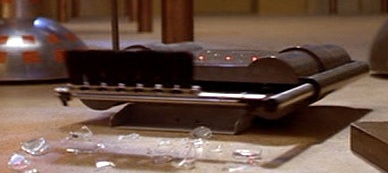
Christopher Noessel from scifiinterfaces.wordpress.com has already done such a great job in describing the robot vacuum cleaner from the 1997 movie "The Fifth Element" that I have re-blogged his post here:
Floor sweeping robots – 22 Apr 2013 by Christopher Noessel
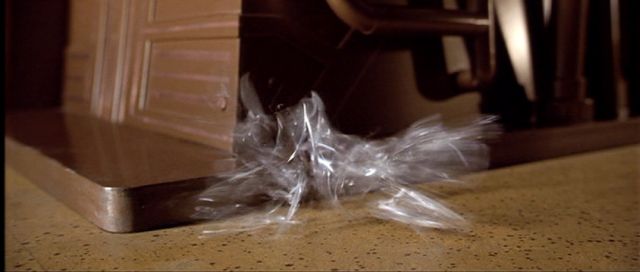
To illustrate his capitalist ideology, (a high-tech version of the parable of the broken window) Zorg activates his automatic cleaning robots. To do this, he deliberately crashes a glass to the floor, where a set of robots come scuttling out from beneath his desk and begin cleaning up.
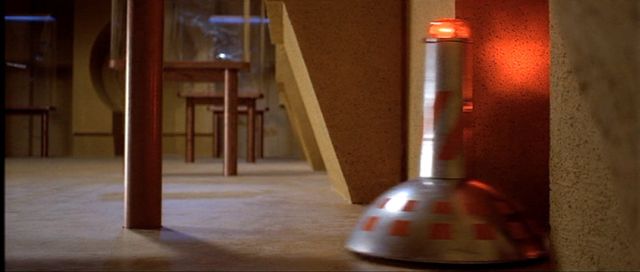
Three of them serve to demarcate the space as a “”robots working”” zone, with tall masts from which red beacon lights warn anyone nearby. In the middle of these three, a sweeper robot gathers the large pieces of glass with broom and dustbin actuators.
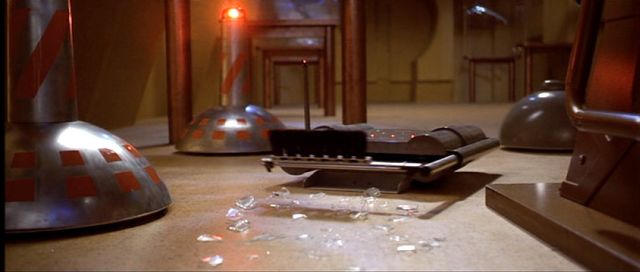
Then, a vacuum robot spins above the location to remove the fine pieces of glass.
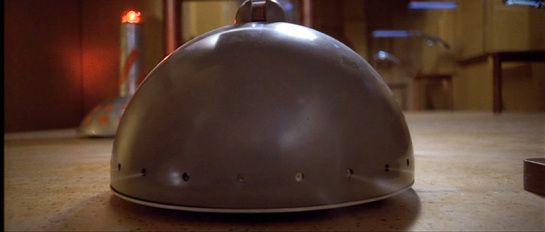
Finally, a hemispheric robot also comes to sterilize the area, or possibly to just spray a pleasing scent in the air. After they are done, they retreat automatically to the desk, and a new drinking glass rises from a hidden compartment to ZorgÂ’s desktop, filling with water to the accompaniment of a small voice that announces ““water”” and, as a bowl of the stuff also raises, ““fruit.””
As Zorg pulls a cherry from the bowl, the same voice announces somewhat pointlessly, ““a cherry.”” (Perhaps useful if the eater is unfamiliar with basic types of fruit.)
Analysis
The robots are meant to do their job safely and efficiently, and then put themselves away as quickly as possible. The main “interface” task they have is to keep nearby humans informed and safe. (Did Asimov write a law for vacuum cleaners?) A minor secondary goal might be to distinguish the function of each by their shape. The robots inform observers explicitly with the stanchion robots’ beacon lights and bright red patterns. In addition, the whirring sounds of each robot’s motors and actuators help to reinforce the fact that they are working. If they were completely silent they would be more problematic for people not looking or unable to see. The beacon might be a bit of overkill and distracting to someone at a distance, but since the robots are small enough to be a trip hazard, and Cornelius is in fact less than a meter away at the time of sweeping, I can see why it might be needed in this particular case. That they are each readily distinguishable means it might be easier to intervene or select a particular one for maintenance. So, aside from the faulty logic they’re meant to embody, mostly really well designed.
The main improvement I can imagine is that the system might reduce the trip hazard by unifying these disparate functions in a single device, and then either keeping them stanchion-high or flattening its top out like a step. But then we’d just have invented Roomba five years early.
See other early remote-controlled and robotic vacuum cleaners and floor scrubbers here.